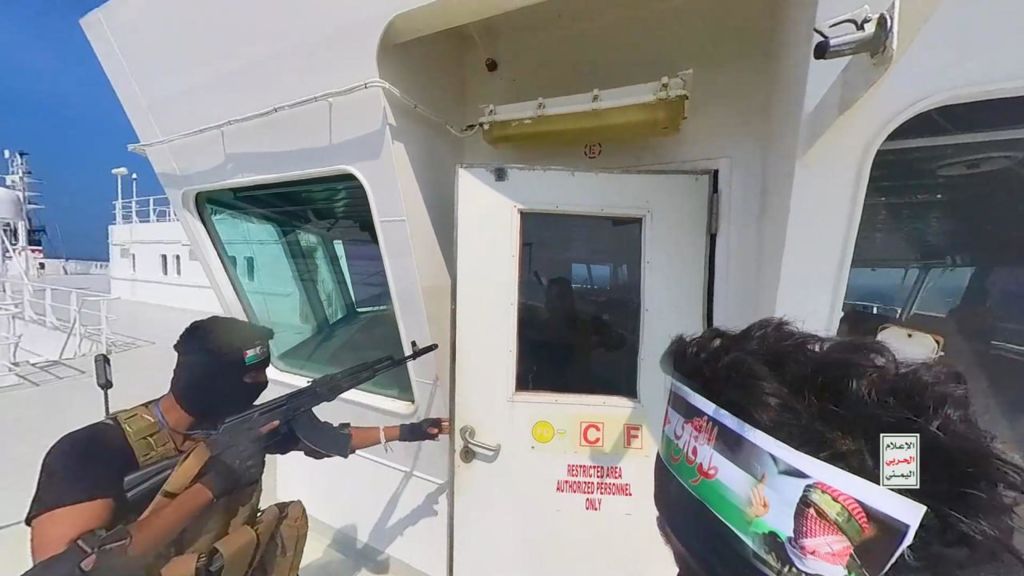The fight for Syria

The collapse of Syria’s al-Assad dynasty, which had ruled for more than a half-century, was always going to represent a daunting challenge for the country and its neighbours. But the escalating conflict over Syria’s future between Turkey and Israel compounds the risks considerably.
In Turkish President Recep Tayyip Erdogan’s view, Syria could not have emerged from its ‘dark era’ had he not lent support to the militias that brought down Syrian dictator Bashar al-Assad. Now, Erdogan sees himself as the patron of Syria’s new president, Ahmed al-Sharaa (also known as Abu Mohammad al-Jolani), and he is eager to shape the new ‘bright’ Syria in Turkey’s image—and promote Turkey’s interests along the way.
For Erdogan, one of those interests is to repatriate the three million Syrian refugees currently in Turkey. Another key priority is preventing Kurdish nationalism from spilling over in Turkey, even if that means taking military action against Kurdish forces in Syria. Moreover, Erdogan is reportedly negotiating a defence pact with Sharaa, which would allow Turkey to establish air bases in Syria and provide training to Syria’s military. As Iranian and most Russian military forces are pulling out, Turkey’s are moving in.
But Israel believes that it, too, deserves credit for Assad’s fall, which probably would not have happened if Israeli military action had not weakened Iran—including by degrading its air-defense capabilities—and devastated its Lebanon-based proxy, Hezbollah. So, why should Turkey be permitted to use the regime change to become the Levant’s new hegemon and attack Israel’s and the United States’ traditional Kurdish allies in northern Syria?
Already, Israeli forces have seized territory in Syria’s south, supposedly to secure the area temporarily. Meanwhile, Israeli Foreign Minister Gideon Saar has pledged to ‘reach out and strengthen our ties’ with the Kurds. And the Committee for the Evaluation of the Defense Establishment Budget and the Balance of Power has recommended that Israel prepare for a possible military confrontation with Turkey in the Kurdish regions of Syria’s north, where Turkey has long supported local armed groups.
In the wake of Assad’s ouster, Israel clearly sees Turkey’s rising regional clout as a threat. But whether Israel likes it or not, Turkey is better positioned to dominate in Syria. And if it succeeds, the implications will reverberate well beyond both countries’ borders.
Napoleon said that a state’s policy ‘lies in its geography’. For Erdogan, this means historical geography: his foreign policy has Turkey straddling the Caucasus, the Middle East and the Balkans, which were once largely under Ottoman rule. After the June 2011 parliamentary election, Erdogan boasted, ‘Sarajevo won today as much as Istanbul. Beirut won as much as Izmir. Damascus won as much as Ankara.’
Now, Erdogan has a chance to realise his long-standing dream of using Turkey’s model of Islamic democracy as a vehicle for diplomatic outreach across the region and positioning the country as a key intermediary between East and West. But he is likely to take a calibrated approach in pursuing his neo-Ottoman ambitions, not least because they have historically drawn bitter opposition from other Sunni powers in the region, especially Egypt.
For Egyptian President Abdel Fattah al-Sisi, containing the Muslim Brotherhood—which led the government that Sisi ousted in 2013—is a matter of existential importance. It was differences over the Muslim Brotherhood that drove him to collaborate with Cyprus, Greece and Israel in 2019 to exclude Turkey from the East Mediterranean Gas Forum. So, Sisi was hardly pleased to witness Assad’s fall, fearing that it might open the door for the Muslim Brotherhood’s resurgence in Egypt.
Rather than jeopardise the nascent thaw in bilateral relations, Erdogan met with Sisi in December to underscore his commitment to supporting Syria’s reconstruction and reconciliation, while allowing Syrians to decide their own future. Turkish Foreign Minister Hakan Fidan was even more explicit, noting that the new Syria should be pluralistic, with all ethnic and religious groups—including Alawites, Christians, and Kurdish minorities—represented.
This is what Sharaa is apparently trying to build. Seeking to position himself as a moderate leader of a multiethnic country, he has severed all ties with al-Qaeda and the Islamic State, and declared that all rebel groups that fought against Assad would be dissolved and integrated into state institutions. This vision cannot work without the Kurds. Even if it could, Sharaa, who has been working hard to amplify his international legitimacy, would not want to target US allies who played a decisive role in the defeat of the Islamic State in Iraq and Syria.
Overcoming the legacy of centuries-long colonial rule, decades of brutal dictatorship, a civil war and the risk of state failure would be a daunting challenge for Syria’s new rulers even under ideal conditions. But the geopolitical ambitions of Syria’s neighbours risk making a difficult task impossible. Adding to the list of regional powers with such ambitions, Qatar and Saudi Arabia, representing two irreconcilable political visions, also aspire to influence the outcome.
In any case, Syria’s stability is in Turkey’s best interest. The Syrian state’s collapse would mean a new influx of refugees and the emergence of a Kurdish proto-state along the Turkish border, with the likely backing of Israel and the US. Turkey could not tolerate a Kurd-controlled statelet in northern Syria, but it could live with a semi-autonomous Kurdish region fully integrated into a unified Syrian state.
A stable Syria is also in Israel’s best interest. In lieu of a Western-style democracy—which is not in the offing anywhere in the Arab world—an Islamist regime whose leader has announced the disbanding of 18 armed militias and called for peace with Israel is about the best outcome Israel could hope for. Instead of encroaching on Syrian territory and cultivating potentially self-fulfilling prophecies about war with Turkey, it should be doing everything it can to support this outcome.









